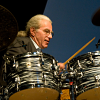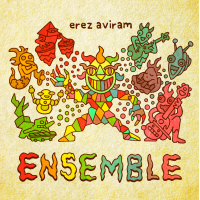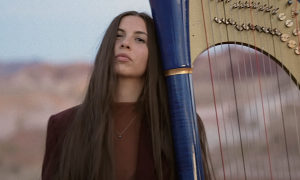Home » Jazz Articles » Interview » Barry Altschul: Another Time, Another Place
Barry Altschul: Another Time, Another Place
AAJ: Indeed.
BA: [laughs] I'm also involved in a group with [trombonist] Steve Swell and Gebhard Ullman, the German reed player, with Hilliard Greene on bass.
AAJ: Are you still teaching?
BA: Privately only, not through the school, but I expect to go back to adjunct next September. I also have my own band with either Ed Schuller or Hilliard Greene on bass, Hayes Greenfield on alto saxophone, and Jake Saslow on tenor (and when he can't make it, Paul Smoker covers for him). We did a thing called the New Orleans Congo Square Project and recorded a couple of tracks for that, but we're about to go in and record a CD. There's another trio I have with an electric bassist named Eric Udell, whose money gig is with the Blues Brothers, and Hayes Greenfield.
Finally, I just had a discussion with Mark Helias and Ray Anderson about doing the reunion thing. And of course there was the Sam Rivers Trio reunion recently—we hadn't played in 25 or 30 years—this was in March at Columbia University. Me, Sam and Dave Holland did a concert with no rehearsals, just a sound check, and we hit and it was like old times! A couple of weeks ago, I did a reunion at the Iridium with Cameron Brown on bass, Roswell Rudd, Lafayette Harris on piano, and [vocalist] Sheila Jordan—going back to Flexible Flyer (Arista, 1975). Friday night was Roswell's birthday and Saturday was Sheila's.
AAJ: With all these experiences, has your philosophy shifted much?
BA: Philosophically, I've always felt that no matter what style of music I was involved in, it was part of the jazz continuum the way I see it. I always felt that no matter whose music I was playing, if they called me, it was because they wanted not just the concept I was bringing but the feeling of swing, even if it was music that didn't swing in the sense of 2 and 4.
align=center>
Barry Altschul present day
AAJ: Right, the "ragtime to no-time" thing.
BA: Whereas the no-time was swinging as well. You know that's not my saying but Beaver Harris,' and I'd like him to get credit for that (because nobody ever gets that right).
AAJ: I noticed that it's been attributed to you, but I know Beaver Harris and his recordings are the germination of that idea.
BA: Yes, I always say, "As Beaver Harris said" and want to be sure he gets that. It's not my shit, but it's exactly how I conceptualize what I play. For me, the no-time is swinging in a way that just makes your body move, whether you're swaying or doing some kind of body motion—whatever makes your body move is swing, you don't necessarily have to snap your fingers.
AAJ: It's interesting how people give you looks if you're at a free gig and your body is moving with the music, tapping your feet, and it seems to confuse some folks.
BA: Well, it's motion, so if you put bar lines in there it'd be mathematically defined. Taking away the bar lines doesn't mean that you take away the feeling.
Thanks to Barry Altschul, Tom Marcello and the staff at All About Jazz New York for making this interview possible.
Selected Discography
Joe Fonda/Barry Altschul/Billy Bang, Transforming the Space (CIMP, 2003)
Adam Lane, Four Beings (CIMP, 2002)
Barry Altschul and Brahma, Somewhere Else (Moers, 1979)
Barry Altschul, Another Time, Another Place (Muse, 1978)
Barry Altschul, You Can't Name Your Own Tune (Muse, 1977)
Sam Rivers, Paragon (Fluid, 1977)
Anthony Braxton, The Montreux/Berlin Concerts (Arista, 1975)
Circle, Live in German Concert (CBS, 1970)
Chick Corea, The Song of Singing (Blue Note, 1970)
Paul Bley, Blood (International Polydor, 1966)
The Jazz Composer's Orchestra, Communication (Fontana, 1966)
Paul Bley, Closer (ESP, 1965)
Photo Credits
Top Photo: Zika Koritnik
Bottom Photo (current): Eugenia Morrison
All Other Photos: Tom Marcello
Tags
PREVIOUS / NEXT
Support All About Jazz
 All About Jazz has been a pillar of jazz since 1995, championing it as an art form and, more importantly, supporting the musicians who make it. Our enduring commitment has made "AAJ" one of the most culturally important websites of its kind, read by hundreds of thousands of fans, musicians and industry figures every month.
All About Jazz has been a pillar of jazz since 1995, championing it as an art form and, more importantly, supporting the musicians who make it. Our enduring commitment has made "AAJ" one of the most culturally important websites of its kind, read by hundreds of thousands of fans, musicians and industry figures every month.






























